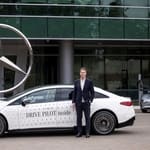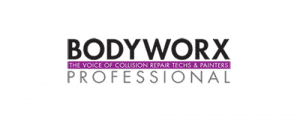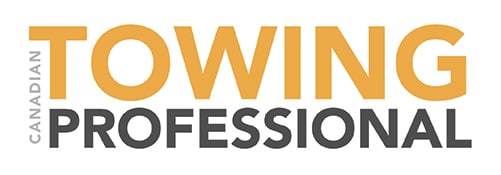- Building a proprietary system: The Mercedes-Benz Operating System (MB.OS) is a new purpose-built chip-to-cloud architecture that will be central to every future product, delivering exceptional software capabilities and delighting customers with its ease of use
- Partnering with innovation leaders: New strategic collaboration to give Mercedes-Benz customers embedded access to Google features and maps; further partnerships with key tech players in hardware and software, ensuring efficient development and rapid scaling
- Elevating infotainment experience: Integrating best-in-class region-specific content spanning music, video, gaming and productivity; vastly superior to smartphone mirroring thanks to full width screen, immersive sound and voice control activation
- Advancing automated driving: Mercedes-Benz is planning enhanced SAE Level 2 functionalities tailored to urban use cases, offering SAE Level 3 ultimately at speeds of up to 130km/h; all powered by the NVIDIA DRIVE platform and machine learning
- Offering flexible upgrades: Fully connectable vehicles will be able to share data and improve rapidly over time via OTA updates; customers will be offered new features via app, web or car
- Unlocking financial opportunity: Software-enabled revenues to evolve to high single-digit billion EUR figure by end of decade; MB.OS expected to enhance productivity and development speed; software investments within existing financial landscape
SUNNYVALE, Calif.–(BUSINESS WIRE)–Mercedes-Benz today detailed its plans as the architect of its own operating system MB.OS, which will be introduced mid-decade with the new MMA platform (Mercedes Modular Architecture). MB.OS is designed and developed in-house to retain full control over the customer relationship, ensure data privacy, and to leverage the unique integration of all car functions. Based on a purpose-built chip-to-cloud architecture, MB.OS benefits from full access to all vehicle domains: infotainment, automated driving, body & comfort, driving & charging. This strategic approach allows the world’s most valuable luxury automotive brand1 to offer its customers a differentiated, superior product experience.
“At Mercedes-Benz, we are dedicated to building the world’s most desirable cars. Accordingly, we made the decision to be the architects of our own operating system – a unique chip-to-cloud architecture that leverages its full access to our vehicles’ hardware- and software components. By combining this in-house expertise with a selection of world-class partners, we will create an outstanding customer experience, from driving assistance, navigation and entertainment, all the way to integrated charging. MB.OS will feature full upgradeability and constant improvements.”
Ola Källenius, Chief Executive Officer, Mercedes-Benz
Building a proprietary system – open for partners
MB.OS is designed to connect the major aspects of the company’s value chain, including development, production, omni-channel commerce and services – effectively making it an operating system for the entire Mercedes-Benz business. That’s why the effects of MB.OS range from decoupling development cycles to enhancing customer lifetime value long after the original car purchase.
The company created its operating system to be standardized across the entire vehicle portfolio, fully updateable for rapid product upgrades and deliberately open for selected partners. While Mercedes-Benz defines and controls the architecture with its own hardware and software base layer, the integration of leading technology players grants customers access to best-in-class services, content and functions.
These MB.OS partners include NVIDIA, which provides its software, data and AI expertise as well as its Orin system-on-chip to enhance benchmark SAE Level 2 and Level 3 automated driving systems. Vehicle variants will also be equipped with next-generation sensors, including Light Detection and Ranging (LiDAR) sensors from Luminar. Today, Mercedes-Benz announced its most recent partnership – the new long-term strategic collaboration with Google to develop and implement a next-generation in-car navigation experience.
Elevating the infotainment experience
Mercedes-Benz will be the first automaker to build its own branded navigation experience based on new in-car data and navigation capabilities from the Google Maps Platform – embedded into MB.OS. This aims to give the luxury carmaker access to Google’s leading geospatial offering, including real-time and predictive traffic information, automatic rerouting, and more. To enrich the user experience, drivers will also be able to use the YouTube app on the infotainment system when parked and while using the DRIVE PILOT Level 3 conditionally automated driving system, where permitted. In addition, Mercedes-Benz will give customers access to Place Details provided by Google, helping them find detailed information about more than 200 million businesses and places around the world, including business hours, photos, ratings, and reviews. Place Details provided by Google will be available starting today in all vehicles with the latest generation of MBUX in applicable markets2.
At the same time, Mercedes-Benz drivers will continue to benefit from the native integration of essential navigation functionalities, which are unavailable from off-the-shelf infotainment systems. One example is precise and reliable range management for electric vehicles. This is only possible because MB.OS has access to all vehicle data such as state of charge and energy consumption – underlining the strategic rationale of combining proprietary assets with selected partnerships.
Mercedes-Benz will further expand its infotainment features with new partnerships for leading video, gaming and productivity applications. MB.OS will open up a new dimension of in-car gaming through Antstream for arcade games. In-car video conferencing solutions will be expanded by adding the popular services Webex and Zoom. In addition, leading dedicated content from Tencent will serve the specific customer preferences in China even better.
A precursor to MB.OS will already be available in the new E-Class starting in 2023 with the third generation of MBUX. A new MBUX API for Android allows the installation of third-party apps, offering a better user experience compared to mirrored apps.
Find out more about the new features of the new E-Class and MBUX here.
Advancing automated driving
The next generation of SAE Level 2 automated driving will start in the Entry segment, leveraging the full potential of machine learning. A comprehensive set of sensors will be available in the MMA platform, which will also benefit from new dimensions of processing power. The sensor setup will be designed to suit the high demands of urban environments, specifically the presence of pedestrians and dense, complex traffic patterns. Where local regulations allow, Mercedes-Benz customers will be able to enjoy more comfort, including hands-free driving while keeping the eyes on the road. In China, navigation-based system-initiated lane changes will also be available, based on a map data from the Chinese local partner AMAP.
The company is focusing on Level 3 conditionally automated driving with the ultimate goal of driving at speeds of up to 130 km/h in its final iteration. To achieve this, Mercedes-Benz has partnered with NVIDIA to build fully programmable and updateable driving automation systems. The “driving brain” of the vehicle is the NVIDIA DRIVE Orin system-on-chip, capable of conducting 254 trillion operations per second to process data from a suite of sensors surrounding the vehicle. The system’s “eyes”, also called perception systems, alongside radar sensors and cameras, are LiDAR sensors from Mercedes-Benz partner Luminar. Luminar’s next-generation IRIS sensor can recognize even small objects with low reflectivity in the infrared spectrum. Additional redundancy in sensing modalities will ensure that the system meets the highest Mercedes-Benz safety standards.
In China, Mercedes-Benz is engaging in a local cloud partnership with Tencent to support its automated driving systems. An enriched UI for automated driving functions including an advanced lane-level map view is planned.
Find out more about Mercedes-Benz conditionally automated driving features here.
Offering flexible upgrades
The technological foundation of MB.OS further enhances the opportunities for software-enabled upgrades. The Mercedes-Benz Operating System decouples hardware from software, allowing for faster innovation cycles, increasing the flexibility and speed of updates. Within MB.OS, everything will be fully connectable through the Mercedes-Benz Intelligent Cloud. This provides the basis for connected services for the entire vehicle fleet and allows Mercedes-Benz to protect and leverage customer data, as the company retains full control over all critical infrastructure.
Mercedes-Benz will offer new services that are more personalized and convenient, thanks to the Mercedes me ID, which connects all customer-related information: from purchase and financing to service appointments right through to charging and payment data. It allows customers to connect with Mercedes-Benz, personalize their settings and profiles and receive offers tailored to their specific needs.
To simplify the customer experience, personalized services and upgrades will translate into three convenient bundles: MB.CONNECT, MB.CHARGE, MB.DRIVE3. Vehicle functions such as Navigation, Remote, Guard 360°, Entertainment and Communication, as well as many others, will be united in the MB.CONNECT bundle – and kept up to date via over-the-air updates. With MB.CHARGE, electric vehicle customers will have access to flexible and attractive tariffs depending on how much they drive. MB.CHARGE provides maximum transparency thanks to fixed-price charging rates as well as priority access to the Mercedes-Benz high-power charging network.
With MB.DRIVE, customers will have the chance to expand the functions of advanced driver assistance systems in their cars. All new models will have the necessary sensing technology on board to enable Level 2 assisted driving. Selected models can be ordered with enhanced assisted driving or Level 3 conditionally automated driving with a fixed-term contract. From 2025 onwards, certain functionalities can be upgraded over the vehicle lifecycle through the Mercedes me Store. To explore new functions and make purchases, customers can access the Mercedes me Store via app, the web or from inside the car.
Unlocking financial opportunity
The company is confident that this strategic approach to software and hardware development will be the basis for lifetime revenues as well as additional contributions. Already in 2022, Mercedes-Benz generated more than 1 billion euro in software-enabled revenues with products and services such as navigation, Live Traffic or online map updates.
Further down the road, the company expects total software-enabled revenues coming from MB.CONNECT and MB.DRIVE to grow to a low-to-mid single-digit billion euro figure by mid-decade; evolving to a high single-digit billion euro figure by the end of the decade. As of today, the company is on track to exceed its own goal of 1 billion euro EBIT from digital services in 2025, which is already part of the existing profit targets.
Software will become a substantial part of the company’s product development process and investment plan, with 25 percent of R&D budget allocated to software by mid-decade. The Group’s midterm investment reduction goals will not be affected.
Forward-looking statements:
This document contains forward-looking statements that reflect our current views about future events. The words “anticipate,” “assume,” “believe,” “estimate,” “expect,” “intend,” “may,” ”can,” “could,” “plan,” “project,” “should” and similar expressions are used to identify forward-looking statements. These statements are subject to many risks and uncertainties, including an adverse development of global economic conditions, in particular a decline of demand in our most important markets; a deterioration of our refinancing possibilities on the credit and financial markets; events of force majeure including natural disasters, pandemics, acts of terrorism, political unrest, armed conflicts, industrial accidents and their effects on our sales, purchasing, production or financial services activities; changes in currency exchange rates, customs and foreign trade provisions; a shift in consumer preferences towards smaller, lower-margin vehicles; a possible lack of acceptance of our products or services which limits our ability to achieve prices and adequately utilize our production capacities; price increases for fuel, raw materials or energy; disruption of production due to shortages of materials or energy, labour strikes or supplier insolvencies; a decline in resale prices of used vehicles; the effective implementation of cost-reduction and efficiency-optimization measures; the business outlook for companies in which we hold a significant equity interest; the successful implementation of strategic cooperations and joint ventures; changes in laws, regulations and government policies, particularly those relating to vehicle emissions, fuel economy and safety; the resolution of pending governmental investigations or of investigations requested by governments and the outcome of pending or threatened future legal proceedings; and other risks and uncertainties, some of which are described under the heading “Risk and Opportunity Report” in this Annual Report. If any of these risks and uncertainties materializes or if the assumptions underlying any of our forward-looking statements prove to be incorrect, the actual results may be materially different from those we express or imply by such statements. We do not intend or assume any obligation to update these forward-looking statements since they are based solely on the circumstances at the date of publication.
Mercedes-Benz Group at a glance
Mercedes-Benz Group AG is one of the world’s most successful automotive companies. With Mercedes-Benz AG, the Group is one of the leading global suppliers of high-end passenger cars and premium vans. Mercedes-Benz Mobility AG offers financing, leasing, car subscription and car rental, fleet management, digital services for charging and payment, insurance brokerage, as well as innovative mobility services. The company founders, Gottlieb Daimler and Carl Benz, made history by inventing the automobile in 1886. As a pioneer of automotive engineering, Mercedes-Benz sees shaping the future of mobility in a safe and sustainable way as both a motivation and obligation. The company’s focus therefore remains on innovative and green technologies as well as on safe and superior vehicles that both captivate and inspire. Mercedes-Benz continues to invest systematically in the development of efficient powertrains and sets the course for an all-electric future: The brand with the three-pointed star pursues the goal to go all-electric by 2030, where market conditions allow. Shifting from electric-first to electric-only, the world’s pre-eminent car company is accelerating toward a fully electric and software-driven future. The company’s efforts are also focused on the intelligent connectivity of its vehicles, autonomous driving and new mobility concepts as Mercedes-Benz regards it as its aspiration and obligation to live up to its responsibility to society and the environment. Mercedes-Benz sells its vehicles and services in nearly every country of the world and has production facilities in Europe, North and Latin America, Asia and Africa. In addition to Mercedes-Benz, the world’s most valuable luxury automotive brand (source: Interbrand study, 03 Nov. 2022), Mercedes-AMG, Mercedes-Maybach, Mercedes-EQ and Mercedes me as well as the brands of Mercedes-Benz Mobility: Mercedes-Benz Bank, Mercedes-Benz Financial Services and Athlon. The company is listed on the Frankfurt and Stuttgart stock exchanges (ticker symbol MBG). In 2022, the Group had a workforce of around 170,000 and sold around 2.5 million vehicles. Group revenues amounted to €150.0 billion and Group EBIT to €20.5 billion.
______________________________
1 According to “Best Global Brands 2022“
2 All Generation 2020 MBUX (NTG7) vehicles with navigation in connect markets except China, Japan and Korea. Series: 223, 206, 295, 297, 296, 294, 254, 232, 177 (from production 12/2022, model year 22/2), W247 (from production 12/2022, model year 22/2), V167 (from production 12/2022, model year 22/2).
3 To use the Mercedes me connect services, you must create a Mercedes me ID and agree to the terms of use for the Mercedes me connect services. The services presented and their availability and functionalities depend in particular on time, the vehicle model, year of manufacture, selected optional equipment and country.
Contacts
Tobias Just, Tel.: +49 (0) 160 868 7568, tobias.just@mercedes-benz.com
Katja Bott, Tel.: +49 (0) 160 861 0452, katja.bott@mercedes-benz.com
Andrea Berg, Tel. +1 917 667 2391, andrea.a.berg@mercedes-benz.com
Further information on Mercedes-Benz Group is available at:
group-media.mercedes-benz.com and group.mercedes-benz.com













